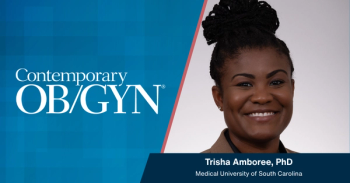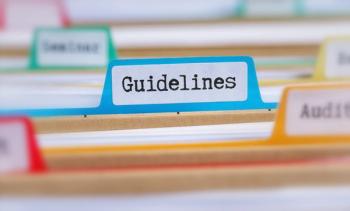
- Vol. 64 No.08
- Volume 64
- Issue 08
Teen pregnancy, depression and the Internet
Internet addiction often is linked with depression but a new study suggests that there is a way to use the technology to help encourage teens with postpartum depression to get treatment.
Internet addiction often is linked with depression but a new study suggests that there is a way to use the technology to help encourage teens with postpartum depression to get treatment. The
Supported by funding from the National Institute of Nursing Researcher, the study was led by a researcher from the University of Louisville. The aim was to determine whether an Internet-based depression intervention was effective in spurring adolescent mothers to get treatment for their depression.
The participants were a small group (n = 151) of adolescent mothers from Kentucky and data on their experiences were compared with outcomes in a control group (n =138). All the women (97.1%) had given birth in the last year (average < 4 months prior) and were living with the infant. Eighty-nine percent were African American and 51.7% had less than a high school education; mean age was 18.2 years.
The intervention included vignettes, questions and answers, and resources. The video vignettes were of other adolescent mothers describing their experience with depression and how they successfully sought depression treatment. They were also shown a list of 10 questions commonly asked about postpartum depression and mental health treatment, including information about medication, counseling, and the range of feelings that teens may experience postpartum. Resources described were county and national resources for pregnant and parenting adolescent mothers including referrals for counseling services and suicide and child abuse prevention hotlines.
Before, immediately after, and two weeks after being exposed to the Internet intervention, the teens answered questions related to the theory of planned behavior (TPB) variables and depression treatment. (TPB predicts an individual’s intention to engage in a behavior at a specific time and place.) For the control group, data were collected in community organizations or home visits; those in the intervention group used a computer of their choice.
The authors found that those in the intervention group more often intended to seek treatment (P = 0.003) and actually receive treatment (P = 0.009) over time when compared with the control group. The intervention independently increased positive attitudes about treatment (B = 2.92, P = 0.018), beliefs of perceived control (B = 2.05, P = 0.021), intention to seek treatment (B = 4.19, P < 0.001), and actually receiving treatment (B = 5.02, P < 0.001). Being depressed (OR = 2.15, 95% CI 1.15-4.04, P = 0.005) and being exposed to the intervention (OR = 1.65, 95% CI 1.06-2.32, P = 0.012) increased the odds of seeking treatment. (Incidence of depression was 12.3% in the intervention group and 13.0% in the control group.) Unadjusted, a majority of those who intended to seek treatment (n = 26, 17.1%) actually did report receiving treatment (n = 22, 84.6%), which is strongly correlated (r = 0.86, P < 0.001).
Limitations of the study included use of self-report measures and unavailability of medical records to confirm participants’ reports of use of mental health services. Because the majority of the adolescent mothers found the Internet intervention acceptable, the authors said similar tools should be considered to promote the health of teens and their infants.
For more updates from our August issue:
Articles in this issue
about 7 years ago
Maternal Mortality Resources - Initiativesabout 7 years ago
Maternal death in rural Americaabout 7 years ago
How should states support pregnant teens?about 7 years ago
Transgender teens: What about fertility preservation?about 7 years ago
How do young women feel about IUD insertion?about 7 years ago
Seven recommendations for mild fetal ventriculomegalyabout 7 years ago
Was this uterine perforation properly managed?about 7 years ago
Telehealth: A new frontier in ob/gynabout 7 years ago
The neglected challenge: Saving America’s rural ob careNewsletter
Get the latest clinical updates, case studies, and expert commentary in obstetric and gynecologic care. Sign up now to stay informed.




















